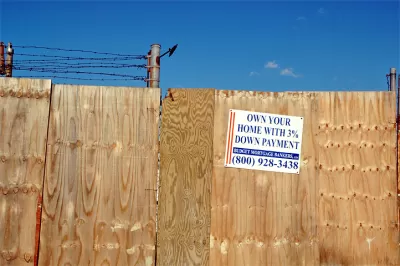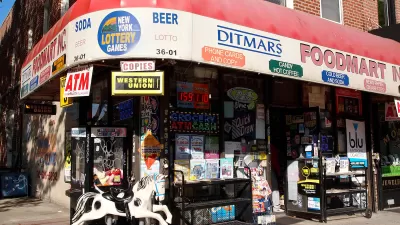A new study explains why so many small homes have such a massive price tag in desirable coastal areas: It's not the coast of building; it's the value of the land.

Issi Romem shares a recent study that reveals the fundamental issues driving up the cost of housing in the Coastal cities around the United States. As Romem states it, "[t]he value of the land accounts for most of the value of a home in expensive coastal cities." In short, this study will provide ammunition to YIMBYs and other advocates for density and housing construction, as well as those favoring a land value tax.
The study estimates the ratio of average home value to replacement cost before mapping those estimates by zip code area within metropolitan areas like New York-Newark, NY-NJ-CT-PA and San Jose-San Francisco-Oakland. What the ratios reveal in many of the coastal metropolitan areas is that the high cost of housing is not the result of construction costs. Rather, high housing costs are "driven by the high cost of land which, in turn, reflects a scarcity of zoned units, not a scarcity of land per se." There is so little capacity to build, that housing construction costs have detached from home values.
Romem's post on the Buildzoom site reproduces the study, including an abstract, an explanation of the study's methodology, maps, and downloads of the estimates both by metropolitan area and zip code.
FULL STORY: Paying For Dirt: Where Have Home Values Detached From Construction Costs?

Study: Maui’s Plan to Convert Vacation Rentals to Long-Term Housing Could Cause Nearly $1 Billion Economic Loss
The plan would reduce visitor accommodation by 25,% resulting in 1,900 jobs lost.

North Texas Transit Leaders Tout Benefits of TOD for Growing Region
At a summit focused on transit-oriented development, policymakers discussed how North Texas’ expanded light rail system can serve as a tool for economic growth.

Why Should We Subsidize Public Transportation?
Many public transit agencies face financial stress due to rising costs, declining fare revenue, and declining subsidies. Transit advocates must provide a strong business case for increasing public transit funding.

How to Make US Trains Faster
Changes to boarding platforms and a switch to electric trains could improve U.S. passenger rail service without the added cost of high-speed rail.

Columbia’s Revitalized ‘Loop’ Is a Hub for Local Entrepreneurs
A focus on small businesses is helping a commercial corridor in Columbia, Missouri thrive.

Invasive Insect Threatens Minnesota’s Ash Forests
The Emerald Ash Borer is a rapidly spreading invasive pest threatening Minnesota’s ash trees, and homeowners are encouraged to plant diverse replacement species, avoid moving ash firewood, and monitor for signs of infestation.
Urban Design for Planners 1: Software Tools
This six-course series explores essential urban design concepts using open source software and equips planners with the tools they need to participate fully in the urban design process.
Planning for Universal Design
Learn the tools for implementing Universal Design in planning regulations.
Ascent Environmental
Borough of Carlisle
Institute for Housing and Urban Development Studies (IHS)
City of Grandview
Harvard GSD Executive Education
Toledo-Lucas County Plan Commissions
Salt Lake City
NYU Wagner Graduate School of Public Service




























